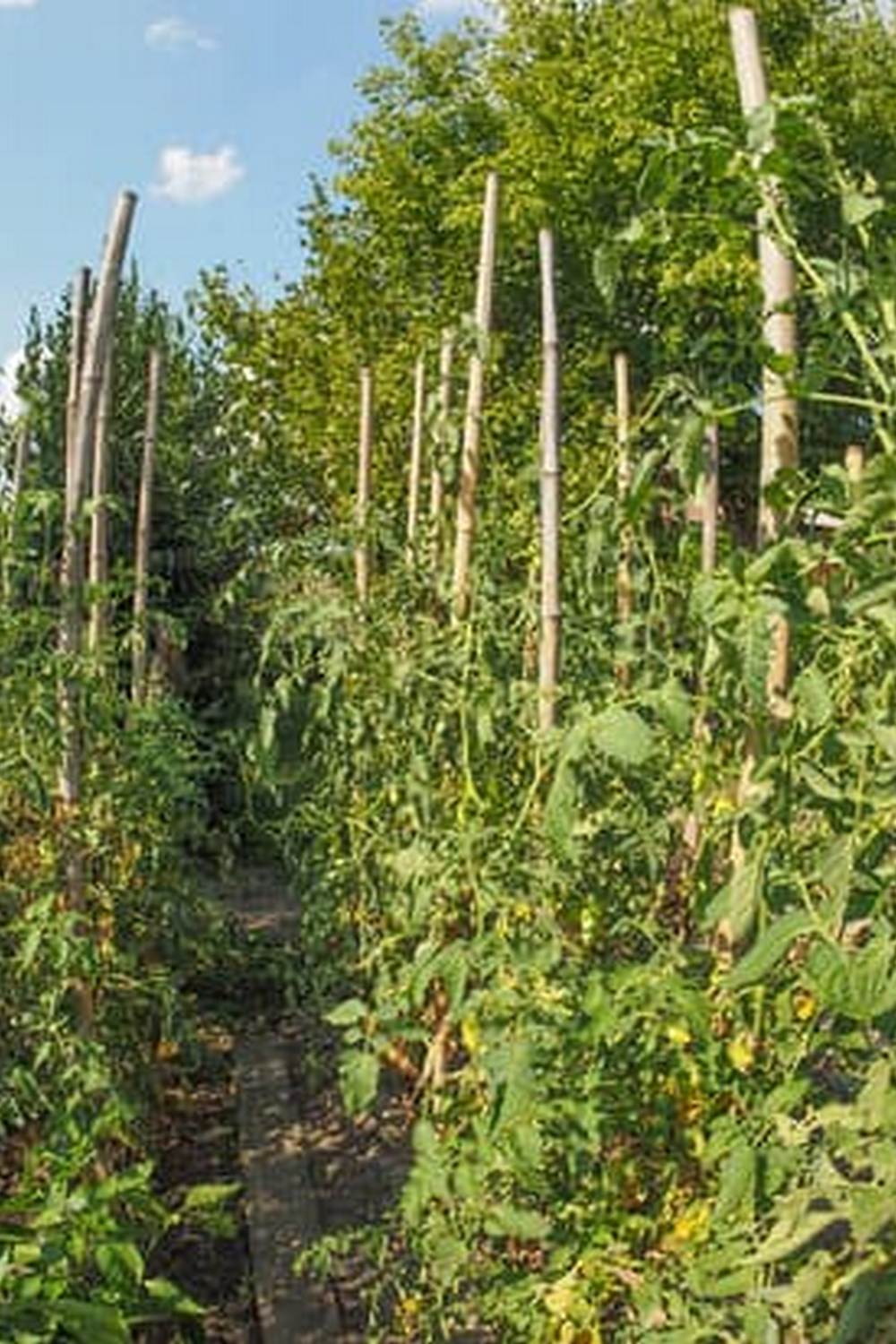Are cinder blocks safe for vegetable gardens? In recent years, there has been a growing trend of utilizing cinder blocks for creating raised beds in vegetable gardens. This unconventional method has gained popularity due to its affordability, accessibility, and versatility.
However, it raises concerns about the potential impact of cinder blocks on the soil and plants. In this article, we will explore the safety and suitability of using cinder blocks for vegetable gardens, considering their composition, risks, benefits, and alternative options.
As gardeners seek cost-effective and durable materials for their vegetable gardens, cinder blocks have emerged as a popular choice. Their sturdy construction and modular shape make them convenient for building raised beds without requiring specialized skills or tools. Yet, questions arise regarding whether the composition of cinder blocks poses any risk to the soil and the plants grown in them. It is essential to understand the potential implications of using these materials before incorporating them into your garden.
While using cinder blocks can be appealing for various reasons, including their affordability and ease of installation, there are potential drawbacks to consider as well. The presence of potentially harmful substances such as fly ash or heavy metals used in manufacturing should be carefully evaluated to ensure they do not leach into the soil and affect plant growth.
Additionally, certain characteristics of cinder blocks may impact soil drainage, temperature regulation, or nutrient retention in vegetable gardens. These factors highlight the importance of thoroughly assessing the safety and suitability of using cinder blocks in this context.
Understanding the Composition of Cinder Blocks and Their Potential Impact on Soil and Plants
Cinder blocks, also known as concrete masonry units (CMUs), are popular choices for building raised beds in vegetable gardens due to their affordability, durability, and ease of use. However, it is important for gardeners to understand the composition of cinder blocks and how they can potentially impact soil and plants.
Cinder blocks are typically made from a mixture of Portland cement, aggregates such as sand or gravel, and water. Some cinder blocks may also contain fly ash or bottom ash as a substitute for cement, which are byproducts of burning coal. While these materials give cinder blocks their strength and durability, they can also have potential impacts on the soil and plants in vegetable gardens.
Potential risks of using cinder blocks in vegetable gardens include leaching of lime from the concrete into the soil, which can raise the pH levels and affect the nutrient availability for plants. Additionally, cinder blocks may contain trace amounts of heavy metals such as lead, cadmium, and chromium, which could potentially be absorbed by plants if they are present in the soil.
It is crucial for gardeners to be aware of these potential impacts when considering using cinder blocks in their vegetable gardens.
To mitigate any potential risks associated with using cinder blocks in vegetable gardens, there are several precautions that gardeners can take:
- Use a liner: To prevent direct contact between the cinder blocks and the soil, lining the interior sides of the raised bed with plastic or landscape fabric can create a barrier.
- Choose food-safe sealants: If sealing is necessary to prevent leaching from cinder blocks into the soil, choose sealants that are labeled as safe for use around food crops.
- Test the soil regularly: Regularly testing the pH levels and nutrient content of the soil can help identify any imbalances caused by using cinder blocks.
Understanding the composition of cinder blocks and taking appropriate measures to minimize their potential impact on soil and plants is essential for safely using them in vegetable gardens. By being aware of these factors and implementing preventative measures, gardeners can make informed decisions about whether cinder blocks are safe for their specific gardening needs.
Exploring the Potential Risks and Drawbacks of Using Cinder Blocks in Vegetable Gardens
When considering the use of cinder blocks in vegetable gardens, it is important to understand the potential risks and drawbacks associated with this material. Cinder blocks are commonly made from concrete, which contains lime and other chemicals that can leach into the soil over time.
This leaching can lead to an increase in alkalinity in the soil, potentially affecting the growth and health of vegetable plants. Additionally, some cinder blocks may contain harmful substances such as fly ash or other industrial byproducts.
One of the main concerns regarding the use of cinder blocks in vegetable gardens is their potential to release harmful chemicals into the soil, which can then be absorbed by the plants. This can pose a risk to both the plants themselves and the individuals consuming these vegetables. Furthermore, because cinder blocks are porous, they have the potential to absorb and retain water, leading to excessive moisture levels in the soil that can be detrimental to certain types of vegetables.
In addition to these chemical and moisture-related concerns, cinder blocks also have a shorter lifespan compared to other materials commonly used for raised beds or garden borders. Over time, cinder blocks may deteriorate due to exposure to weather conditions and constant contact with moist soil. As they break down, they may release even more potentially harmful substances into the surrounding environment.
| Potential Risks | Drawbacks |
|---|---|
| Leaching of chemicals into soil | Shorter lifespan compared to other materials |
| Increase in alkalinity of soil | Possibility of retaining excessive moisture in soil |
| Potential absorption by plants | Deterioration over time leading to further release of harmful substances |
Identifying the Benefits of Using Cinder Blocks for Vegetable Gardens
Cinder blocks have become increasingly popular in vegetable gardening due to their affordability, durability, and versatility. There are several benefits to using cinder blocks in vegetable gardens, making them an attractive option for both experienced gardeners and beginners.
Raised Bed Construction
One of the main benefits of using cinder blocks in vegetable gardens is their ability to create raised beds easily. The interlocking design of cinder blocks allows for quick and sturdy construction, resulting in well-defined raised beds that can help with soil drainage, aeration, and pest control.
Longevity
Cinder blocks are known for their durability, making them a long-lasting option for vegetable gardens. Unlike wood or other materials that may rot or deteriorate over time, cinder blocks can withstand the elements and provide a stable structure for years to come.
Versatility
Another benefit of using cinder blocks is their versatility. They can be used not only for building raised beds but also for creating borders, retaining walls, or even decorative elements within the garden. This flexibility allows gardeners to customize their vegetable garden layout according to their needs and preferences.
Overall, cinder blocks offer several benefits that make them a popular choice for vegetable gardening. Their ease of construction, durability, and versatility make them an appealing option for those looking to establish a productive and visually appealing vegetable garden.
Tips for Safely Using Cinder Blocks in Vegetable Gardens to Mitigate Any Potential Risks
When using cinder blocks for vegetable gardens, it is important to take certain precautions to ensure the safety of your plants and soil. While cinder blocks are a popular choice for constructing raised beds due to their affordability and durability, they can potentially impact the soil and plants in your garden. By implementing the following tips, you can mitigate any potential risks and safely use cinder blocks in your vegetable garden.
Use Barrier Material
To prevent the leaching of harmful chemicals from the cinder blocks into the soil, consider using a barrier material such as landscape fabric or heavy-duty plastic. This will act as a protective layer between the cinder blocks and the soil, reducing the risk of contamination. Be sure to line the interior sides and bottom of the raised bed with the barrier material before adding soil to create an effective protective barrier.
Choose Non-Painted Cinder Blocks
Avoid using painted cinder blocks in your vegetable garden, as they may contain lead-based paint or other toxic substances that can leach into the soil over time. Instead, opt for plain, unpainted cinder blocks to minimize any potential risks associated with chemical leaching. Unfinished cinder blocks may be a safer option for use in vegetable gardens as they are less likely to introduce harmful substances into the soil.
Monitor Soil pH Levels
Regularly test the pH levels of your soil when using cinder blocks in your vegetable garden, as these materials can affect soil acidity over time. Consider using pH testing kits or electronic pH meters to monitor any changes in soil acidity and take appropriate measures if necessary. Adding organic matter such as compost or peat moss can help maintain optimal pH levels and counteract any potential changes caused by the presence of cinder blocks.
By following these tips for safely using cinder blocks in your vegetable garden, you can minimize potential risks and create a healthy environment for your plants to thrive. It is important to weigh the benefits against potential drawbacks when deciding whether or not to use cinder blocks for your vegetable garden.
Alternatives to Using Cinder Blocks for Vegetable Gardens
When considering options for building a vegetable garden, it is important to explore alternatives to using cinder blocks. While cinder blocks have become popular due to their affordability and ease of use, there are other materials that can be utilized to create a safe and productive garden.
One alternative to using cinder blocks for vegetable gardens is using untreated wood. Wood is a natural and versatile material that can be used to construct raised beds or container gardens. Untreated wood, such as cedar or redwood, is resistant to decay and can provide a healthy environment for your plants. Additionally, wood can be easily customized to fit the specific needs and dimensions of your garden space.
Another alternative is using recycled plastic or composite materials. These materials are durable, lightweight, and resistant to rotting or deteriorating over time. They are also environmentally friendly as they make use of recycled plastics, contributing to sustainability efforts in gardening.
Lastly, consider using natural stone or bricks for constructing your vegetable garden. Stone and bricks are durable and long-lasting, providing stability and structure for your plants. Additionally, they add aesthetic appeal to your garden space while creating a sturdy foundation for plant growth.
These alternatives provide safe and effective options for building vegetable gardens without the potential risks associated with cinder blocks.
| Alternative Material | Advantages |
|---|---|
| Untreated Wood | Natural, resistant to decay, customizable |
| Recycled Plastic/Composite Materials | Durable, lightweight, environmentally friendly |
| Natural Stone/Bricks | Durable, long-lasting, aesthetic appeal |
Case Studies and Real-Life Examples of Successful Vegetable Gardens Using Cinder Blocks
Cinder blocks have become increasingly popular for use in vegetable gardens due to their affordability, durability, and the ease with which they can be assembled into raised garden beds. Many gardeners have found success using cinder blocks to grow a variety of vegetables, herbs, and fruits. Below are some case studies and real-life examples of successful vegetable gardens using cinder blocks.
Case Study 1: The Smith Family Garden
The Smith family decided to use cinder blocks to create raised beds for their vegetable garden after reading about their benefits online. They were initially concerned about the safety of using cinder blocks, but after conducting thorough research on proper soil preparation and planting techniques, they were able to successfully grow a wide range of vegetables including tomatoes, peppers, lettuce, and carrots.
The Smiths found that the cinder blocks helped to retain moisture in the soil and provided excellent drainage for their plants.
Case Study 2: Community Garden Project
In a community garden project, several participants used cinder blocks to construct raised beds for their individual plots. They all reported positive outcomes with their vegetable gardening efforts. By filling the raised beds with high-quality soil and compost, they were able to yield bountiful harvests of fresh produce throughout the growing season.
- Choose high-quality potting mix or garden soil for filling the cinder block compartments.
- Consider lining the inside of the cinder block walls with landscape fabric to prevent any potential leaching of harmful materials into the soil.
- Regularly test the pH level of your soil and make necessary adjustments to maintain optimal growing conditions for your vegetables.
These case studies demonstrate that when used properly, cinder blocks can indeed be safe for vegetable gardens. The key is understanding how to mitigate any potential risks and taking appropriate measures to ensure that your plants thrive in this environment.
Conclusion
In conclusion, the use of cinder blocks for vegetable gardens has become increasingly popular due to their affordability, durability, and ease of use. However, it is important to consider the potential impact of cinder blocks on soil and plants before incorporating them into your garden. While cinder blocks are generally safe for vegetable gardens, there are certain risks and drawbacks that should be taken into account.
Understanding the composition of cinder blocks is crucial in determining their safety for vegetable gardens. Cinder blocks may contain potentially harmful substances such as fly ash, which can leach into the soil over time and affect plant growth.
Additionally, the high alkalinity of cinder blocks can alter the pH levels of the soil, impacting the health of your vegetables. Despite these concerns, there are ways to safely use cinder blocks in vegetable gardens by lining them with a barrier or using a protective sealant.
It is also important to consider alternative materials for building raised beds in vegetable gardens, such as untreated wood or recycled plastic lumber. These options provide a safer and more sustainable alternative to cinder blocks.
Ultimately, while there are potential risks associated with using cinder blocks in vegetable gardens, they can be used safely with proper precautions in place. By weighing both the benefits and drawbacks, gardeners can make an informed decision on whether cinder blocks are suitable for their vegetable garden needs.
Frequently Asked Questions
Can You Make a Raised Garden Bed With Cinder Blocks?
Yes, you can make a raised garden bed with cinder blocks. They are an affordable and durable option for creating a raised bed for your plants. However, it’s important to ensure that the blocks are clean and not treated with any harmful chemicals.
Do Cinder Blocks Have Chemicals?
Yes, cinder blocks do contain some chemicals. These include heavy metals such as lead and other potentially harmful substances like fly ash and bottom ash. This is why it’s important to be cautious when using cinder blocks in projects like gardening or construction.
What Is the Difference Between a Cinder Block and a Concrete Block?
The main difference between a cinder block and a concrete block lies in the materials used to make them. Cinder blocks are made from coal cinders, while concrete blocks are made from a mixture of cement, sand, and gravel. In terms of use, concrete blocks are generally stronger and more versatile than cinder blocks.

If you’re looking to get into vegetable gardening, or are just looking for some tips on how to make your current garden better, then you’ve come to the right place! My name is Ethel and I have been gardening for years. In this blog, I’m going to share with you some of my best tips on how to create a successful vegetable garden.





